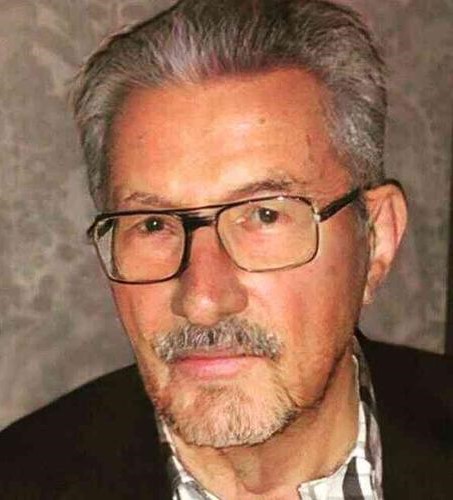Hector Battifora, MD, 1930-2023
By Emma Florio, Archives & Research Specialist
Hector Battifora was born on December 11, 1930, in Lima, Peru. He received both his BS and MD from the National University of San Marcos in Lima, one of the first universities established in the Americas. After earning his MD in 1957 he decided to come to the United States because, as he later said, that was where the research opportunities were. He was attracted to pathology as a specialty because he felt it had a stronger emphasis on science than other parts of medicine. He completed his residency in Clinical and Anatomical Pathology at Rush University Medical Center in Chicago in 1958 and returned to Peru to get married.
 |
|
Battifora later in life. Via Legacy.com.
|
In 1959 Battifora and his wife Marina came back to Chicago, he to join the Department of Pathology at University of Illinois College of Medicine and she to study voice at Northwestern—she would go on to become a professional mezzo-soprano who performed throughout the United States. In 1969 Battifora joined the faculty of Northwestern University Medical School as an Associate Professor of Pathology and was promoted to Professor five years later. His research focused on surgical pathology and the classification and diagnosis of tumors using monoclonal antibodies—lab-produced proteins that bind to specific targets in the body, like cancer cells.
Battifora remained on the faculty of Northwestern until 1982, when he moved to the suburbs of Los Angeles and joined the Department of Pathology at City of Hope National Medical Center, known for its cancer treatment center. In 1984 he helped develop a test that used monoclonal antibodies to distinguish between carcinoma and lymphoma, two different forms of cancer with different treatments—carcinoma can be treated locally with surgical removal of tissue while lymphoma must be treated more generally with chemotherapy. It was touted as a way to avoid needless surgeries for previously undifferentiated tumors. He also gained international fame for developing the multi-tumor tissue block, or “sausage” block, which allowed for testing of many tissue samples on a single slide with one drop of antibody. This led to much faster and more efficient testing.
 |
|
Battifora at the University of Salamanca, 1998. Via Legacy.com.
|
Throughout his career, Battifora was involved with many professional organizations. Most notably, he served on the governing council and as president of the United States and Canadian Academy of Pathology and he also served as president of the Peruvian American Medical Society, which provides medical care and education to underserved communities in Peru. In 1998 he received an honorary doctorate from the University of Salamanca, the oldest university in the Hispanic world. In his acceptance speech, he described his decision to become an American citizen and explained that “mis nexos hispanoamericanos, sin embargo, nunca menguaron en mi vida privada y menos aún en mi vida académica” (My Hispanic American ties, however, never diminished in my private life and even less so in my academic life).
Later in life, Battifora worked as the medical director of several pathology companies, including Pathology Consultation Services, where he specialized in mesothelioma and consulted for national law firms on asbestos litigation. Battifora died in Arcadia, CA, on July 25, 2023, at age 92. His name lives on in the Hector Battifora mesothelial-1 antibody (HBME-1), a monoclonal antibody used to diagnose tumors.
Selected References
Battifora, Hector. “Discurso de aceptación del Dr. Héctor Battifora del título de Doctor Honoris Causa por la Universidad de Salamanca.” Revista Española de Patología 32, no. 1 (enero-marzo 1999): 11-13.
“Development in cancer research reported.” UPI Archives. May 7, 1984.
Legacy Remembers. “Hector Battifora Obituary.” Legacy.com. July 28, 2023.
Updated: October 15, 2024